- NEED HELP? CALL US NOW
- +919995411505
- [email protected]
Malocclusion
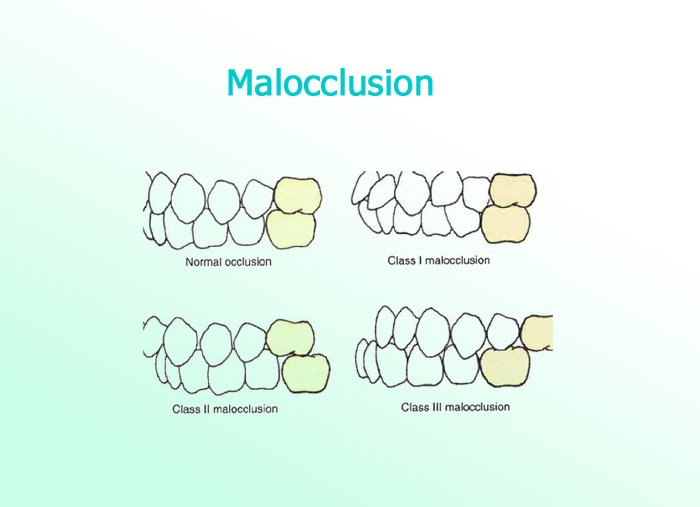
ANGLES SYSTEM OF CLASSIFICATION
Angles classification was based on the mesiodistal relationship of the teeth, dental arches and jaws. According to angle, the maxillary first permanent molar is the key to occlusion. He considered these teeth as fixed anatomical points within the jaws..Angle's class I: It is characterised by the presence of a normal inter arch molar relation.
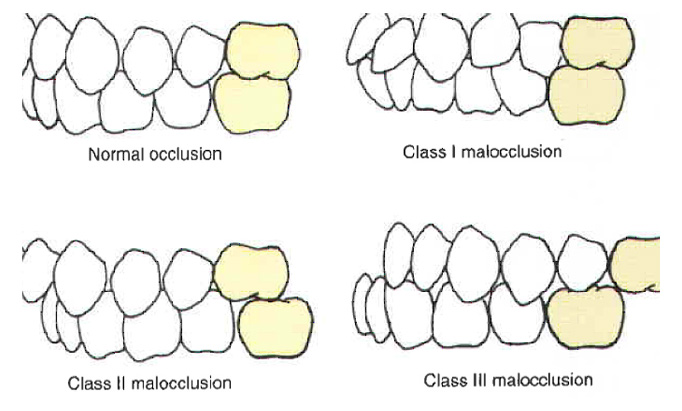
Angle' s class II: It is characterized by a molar relation where the distobuccal cusp of the upper first permanent molar occludes in the buccal grove of the lower first permanent molars.
Class II division 1: Proclined upper incisors with a resulatant increase in overjet.
Class II division 2: Lingually inclined upper central incisors and labially tipped upper lateral incisors overlapping the central incisors.
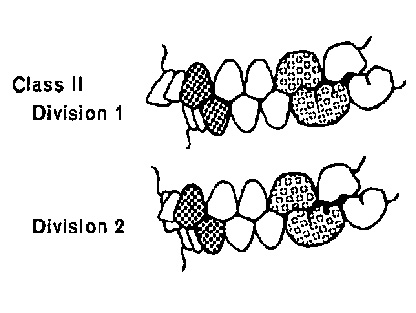
Class II subdivision: when a class II molar relation exists on one side and class I relation on the other.
Class III malocclusion: With mesiobuccal cusp of the maxillary first permanent molar occluding in the interdental space between the mandibular first and second molars.
True class III: Occurs due to,
- Excessively large mandible
- Forwardly placed mandible
- Smaller than normal maxilla
- Retropositioned maxilla
- Combination of the above cases
Pseudo class III : This type of maloccusion is produced by a forward movement of the mandible during jaw closure, thus it is also called postural or habitual class III malocclusion.
DEWEY'S MODIFICATION OF ANGLE'S MALOCCLUSION:
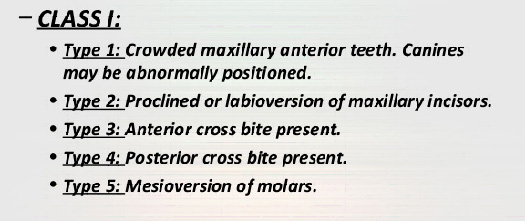
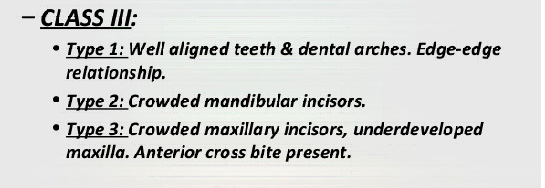
LISCHER'S MODIFICATION OF ANGLE'S CLASSIFICATION.:
Neutrocclusion: Angles class I malocclusion
Distocclusion: Angles class II malocclusion
Mesiocclusion: Angles classIII malocclusion
Buccocclusion: Buccal placement of a tooth or a group of teeth
Linguocclusion: Lingual placement of a tooth or a group of teeth
Supraocclusion: Tooth erupted beyond normal level
Infraocclusion: Tooth have not erupted to normal level
Mesioversion: Mesial to normal position
Distoversion: Distal to normal position
Transversion: Transposition of 2 teeth
Axiversion: Abnormal axial inclination of a tooth
Torsiversion: Rotation of a tooth around its long axis
ACKERMAN- PROFIT SYSTEM:
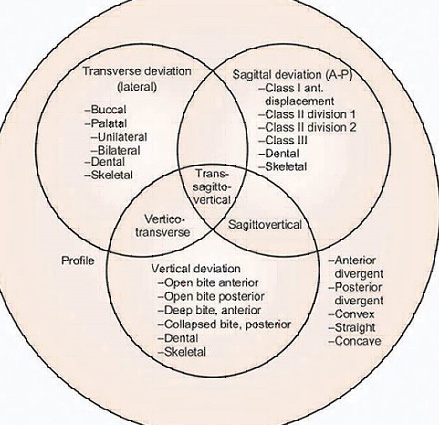
Neutrocclusion: Angles class I malocclusion
Distocclusion: Angles class II malocclusion
Mesiocclusion: Angles classIII malocclusion
Buccocclusion: Buccal placement of a tooth or a group of teeth
Linguocclusion: Lingual placement of a tooth or a group of teeth
Supraocclusion: Tooth erupted beyond normal level
Infraocclusion: Tooth have not erupted to normal level
Mesioversion: Mesial to normal position
Distoversion: Distal to normal position
Transversion: Transposition of 2 teeth
Axiversion: Abnormal axial inclination of a tooth
Torsiversion: Rotation of a tooth around its long axis
ACKERMAN- PROFIT SYSTEM:

Related posts
April 10, 2025
April 9, 2025
April 4, 2025




